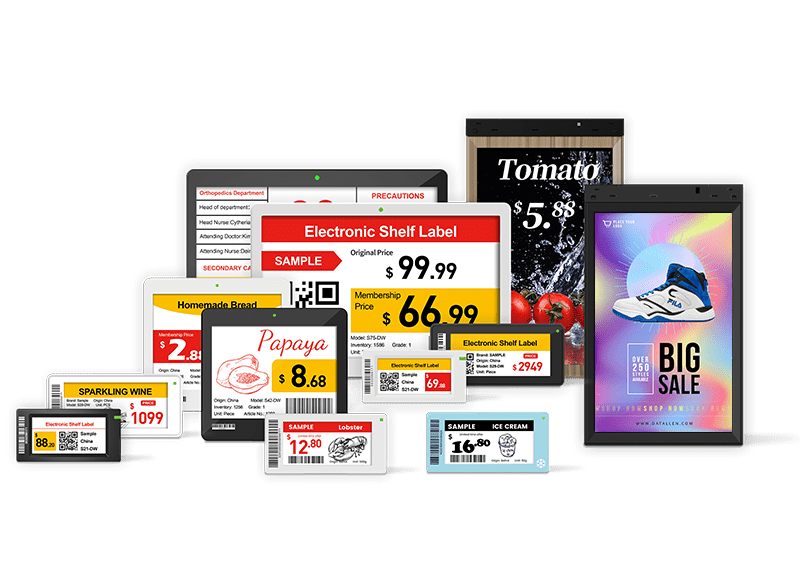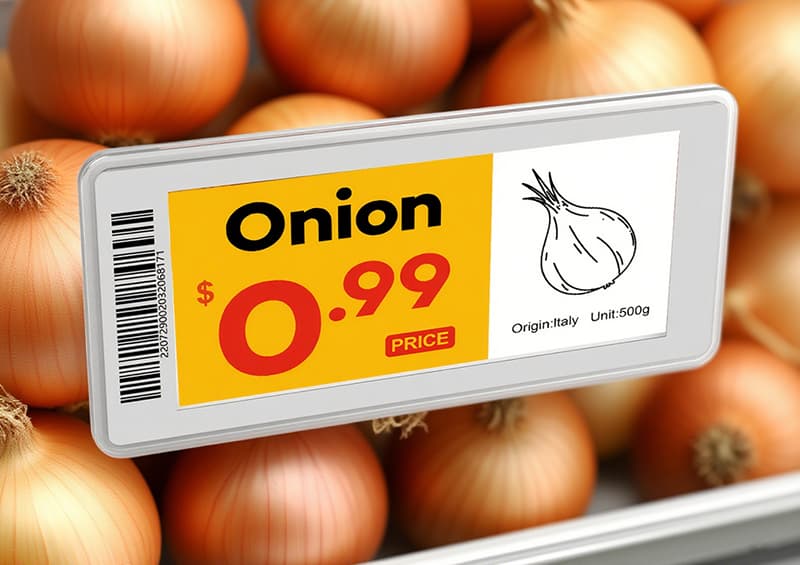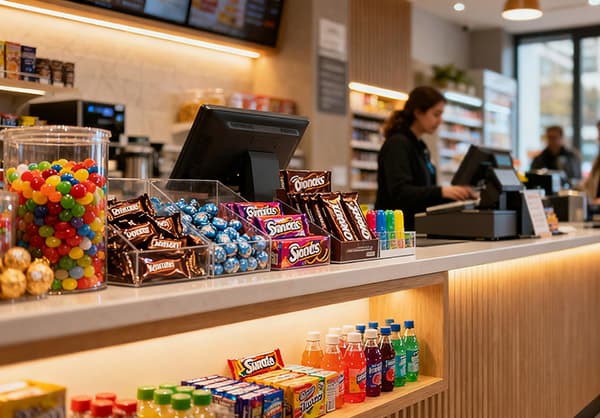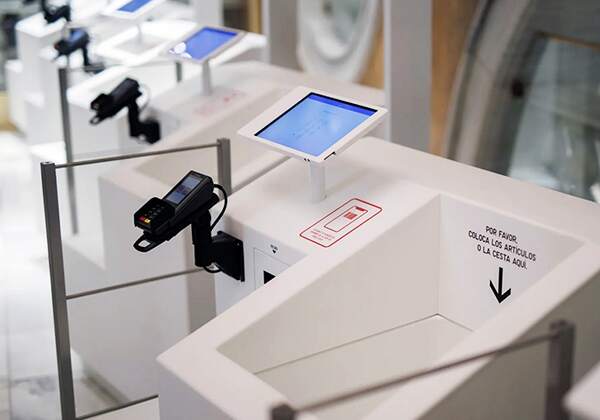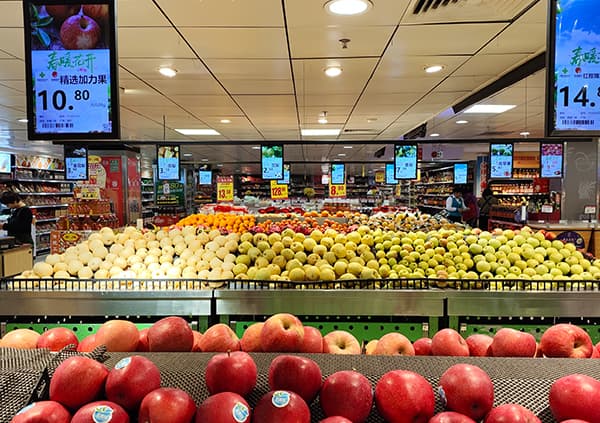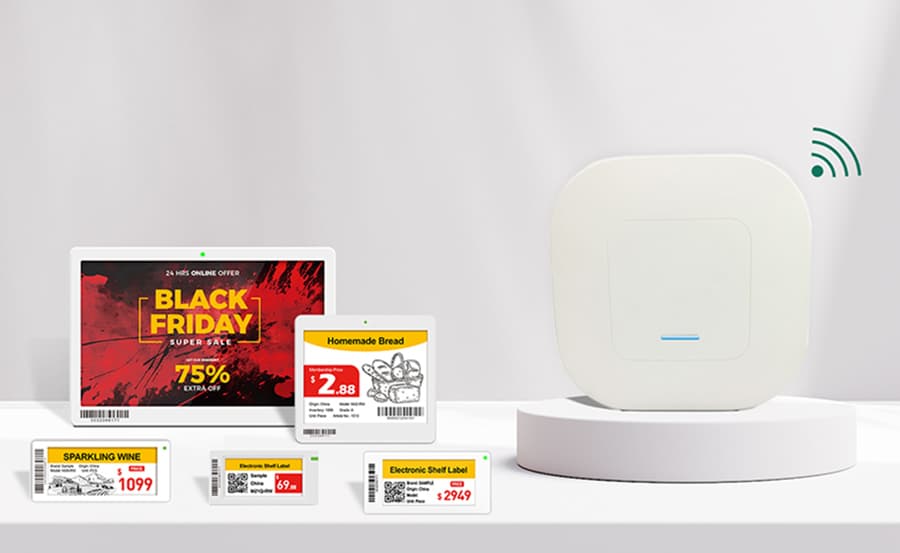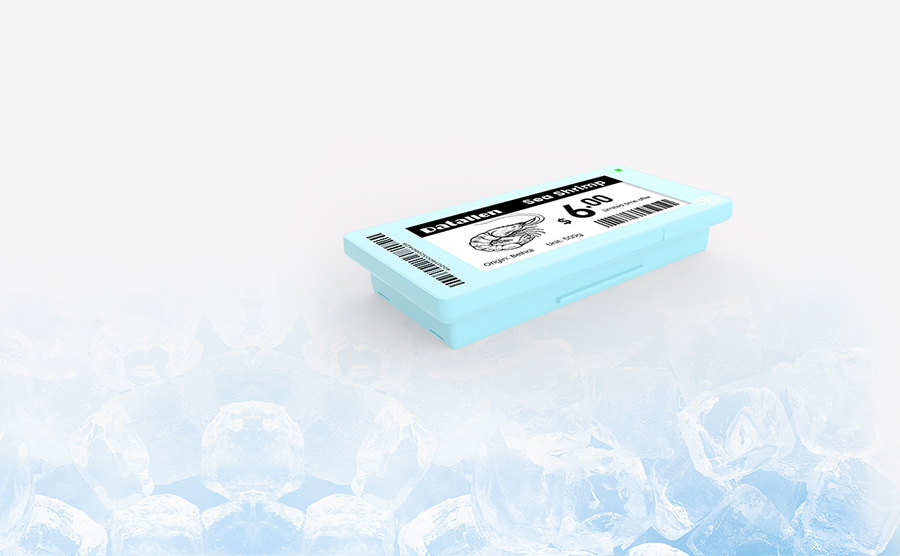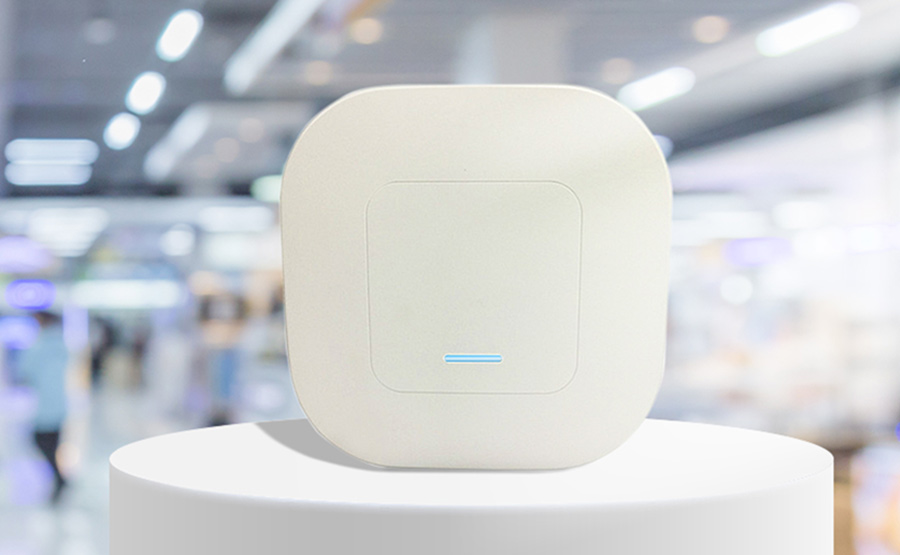When a Gen Z shopper scans a dynamic price tag in the snack aisle, 73% of impulse buying decisions are already made within the three seconds that a digital screen flashes an irresistible offer.
Have you noticed—
That a supermarket beverage cooler near checkout boost sales by 52% in summer simply by switching to a “Beach Party” themed lighting setup?
That the Labubu blind box collaboration went viral with “melancholic-cute” memes on TikTok, selling $6 million in a single live-stream?
Or that a convenience store freezer door flashing “Heatwave Alert! Half-Price Ice Cream Today” drove a 40% spike in same-day frozen dessert sales?
These are not random flukes—they are the nuclear-level impact of POP marketing (Point of Purchase Marketing). It’s about using the golden three seconds of attention at the shopping endpoint to transform products into emotional triggers, driving unplanned purchases.
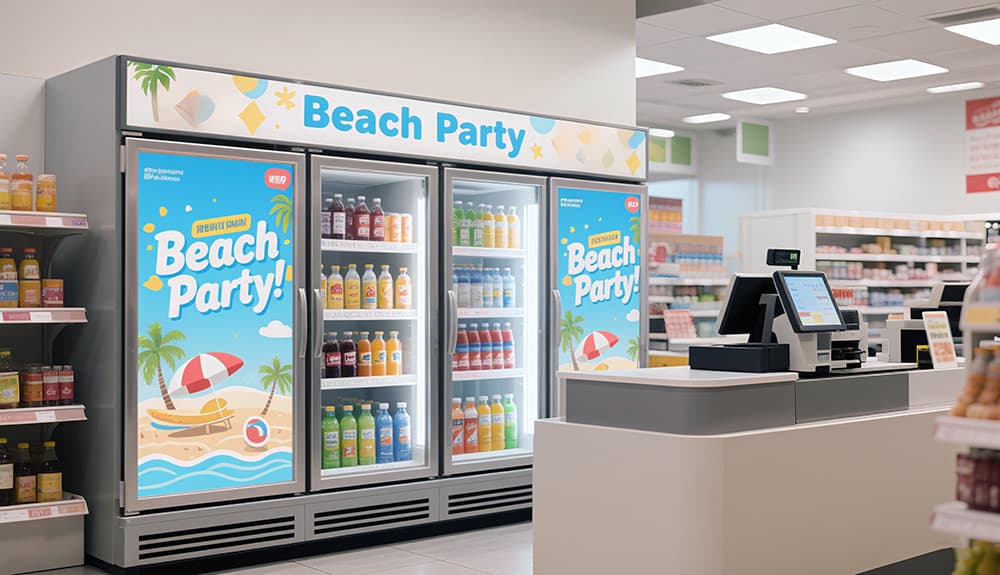
POP Marketing Essentials: Winning in the “Last One Centimeter” of Decision
What Does POP Stand for in Marketing?
POP stands for Point of Purchase—the physical or digital space where a consumer ultimately makes a buying decision. Unlike POS (Point of Sale), which is narrowly focused on the transaction point (e.g., the cashier counter), POP spans the entire in-store journey—from the entrance to the fitting room.
POP vs POS: The Key Difference
POS: The point where payment happens—focused on processing the transaction.
POP: Every touchpoint is designed to influence the decision before payment.
In practice, the two work in harmony—POS is the final gate, while POP is the persuasive corridor leading up to it.
The Behavioral Logic Behind POP
A Boston Consulting Group study shows that 73% of shoppers change their purchase decision while in-store, and 40% of those changes are triggered by in-store displays.
POP Marketing Meaning in Business
In business terms, POP marketing is about embedding your brand into the decision-making environment, making it almost impossible to ignore.
It increases brand salience, reinforces memory cues, and differentiates a product in a crowded category. For example, a heritage beverage brand in Southeast Asia refreshed its image through a neon-lit interactive display, pulling in younger shoppers and transforming its “old-school” image into a social media moment.
POP is not only about selling more today—it’s about being remembered tomorrow.
7 Point of Purchase Materials Examples
Below are 7 creative POP materials examples that combine strategic placement, strong visuals, and clear messaging to convert shoppers into buyers.
1. End-Cap Displays
Placing new or seasonal items at the ends of aisles ensures high visibility. Think seasonal snacks in a grocery store or holiday gift sets in a specialty shop.
Why they work: High foot traffic + natural sight lines = attention. These are among the classic pop material examples for a reason.
One real-world example comes from Lancôme, partLa Vi fragraJulia Roberts smil
The display is strategically located in a high-traffic zone within the department store’s beauty section, positioned to intercept customers before they reach the checkout or adjacent makeup counters. Its combination of theatrical imagery, premium materials, and clear product focus exemplifies how a POP display can enhance brand prestige.
(Reference Information: https://moodiedavittreport.com/makesomeonehappy-lancome-blooms-anew-with-global-launch-of-la-vie-est-belle-flowers-of-happiness-at-changi/)
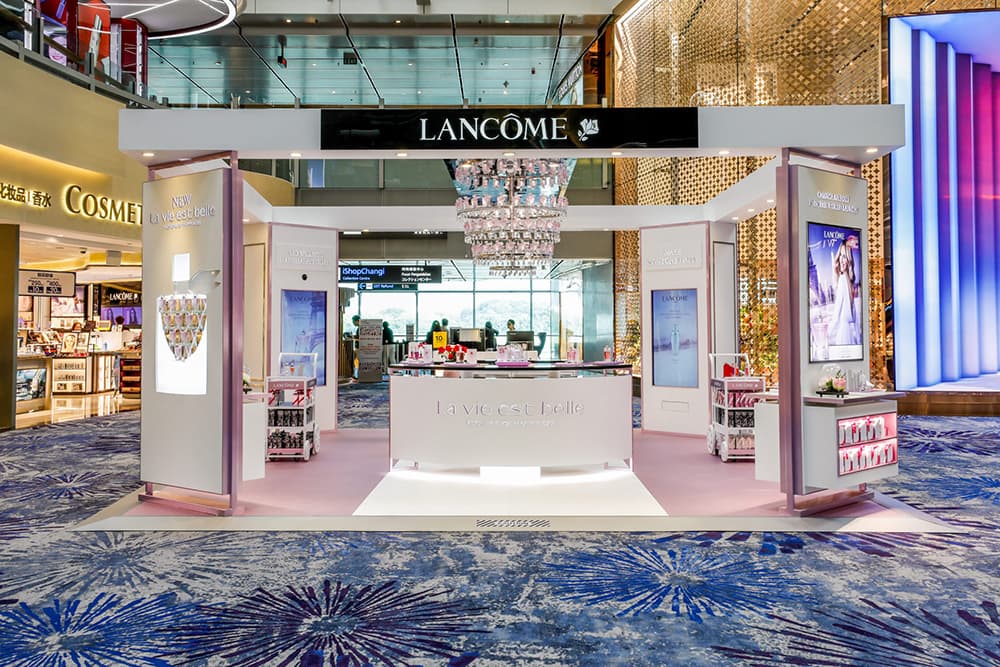
2. Floor Stand-Alone Units (Freestanding Displays)
Freestanding displays positioned mid-floor or near entryways work well for products that benefit from exploration—beauty products, accessories, or tech gadgets.
Why they work: Flexibility in location, strong presence; they can serve as mini showrooms for specific product lines.
3. Shelf Talkers & Wobblers
Small tags, flags, or wobblers that protrude from shelves are inexpensive yet effective. For instance, a big bonus or best-seller badge on a shelf tag in pet food or nutritional supplement aisles acts as an attention grabber.
Why they work: These tactile, localized signals help consumers spot items among many, especially when distracted or browsing fast.
4. Checkout Counter Impulse Displays
Items that encourage last-minute spontaneous buys—such as travel-size toiletries, small snacks, or phone accessories—are perfect here.
Why they work: Customers are captive at checkout; strong point of purchase materials here can turn waiting time into upsell opportunity.
5. Window & Floor Graphics
Window displays draw people in, while floor graphics like pathway stickers or decals guide them deeper into the store.
Why they work: They make use of underused real estate; well-designed graphics help with wayfinding, storytelling, and mood setting even before shoppers touch the shelves.
6. Live Product Demonstrations & Sampling Booths
Especially in food & beverage, cosmetics, or tools—letting customers try or test elevates the experience. A demo chef, a beauty consultant, or a gadget tech showing real usage can be very effective.
Why they work: Touch, smell, and use often close the gap between consideration and purchase. It reduces perceived risk and creates memorable impressions.
7. Themed Seasonal & Holiday Displays
Retailers who rotate décor, signage, and product mixes around holidays (Christmas, Halloween, back-to-school) or local events tap into emotional associations.
Why they work: They leverage time-sensitive relevance. Shoppers are more primed to buy themed products when the shopping environment reinforces seasonal intent.
High-Conversion POP Marketing Strategy: The Science of “Sensory Hijacking”
Strategy 1: Emotional Economics—Make Products Emotional Symbols
The Labubu blind box phenomenon succeeded because it nailed the emotional symbolization formula:
Pain Point to Scene: Address Gen Z’s urban loneliness through an “irreverent elf” persona
Immersion: Packaging and in-store displays designed for photo-sharing
Result: Month-long sellouts with prices 30× retail in resale markets
Another case: Yili’s “Butter Bear” collaboration—its soothing imagery sparked emotional warmth on social media, generating 60% of sales online but amplified by in-store collectible displays.
Strategy 2: Dynamic Price Touchpoints—ESLs Reshape Price Battles
The Pain Points of Paper Tags:
In fresh produce zones, prices change 3+ times daily, pushing labor costs sky-high
Static labels miss critical sales peaks
The ESL Advantage:
Real-Time Price Sync: Integrated with ERP, adjusting in seconds (e.g., midday “lunch rush” discounts)
Multi-Layer Content: From origin info (“Chilean cherries, 18°+ sweetness”) to nutrition facts and countdown timers
Trigger-Based Promos: Auto-launch cold beverage offers when temp > 30°C
Strategy 3: Digital Signage—Turning Shelves Into Conversations
Digital signage transforms traditional shelving into an active communication point. Positioned at high-traffic locations—such as store entrances, near escalators, or along the checkout queue—screens loop vivid product videos, limited-time offers, and seasonal themes. For example, in a beverage aisle, a digital display might switch to a “Summer Chill” visual, highlighting cold drink combos with animated ice effects and countdown timers for promotions ending that day. Content updates can be scheduled remotely, allowing retailers to align promotions with weather conditions, holidays, or in-store events, ensuring that the message is always relevant and timely without relying on static printed materials.
Best Practices for Point of Purchase Materials
To maximize results from POP materials, here are helpful principles:
Simplicity & Clarity: Your message should be grasped in under 3 seconds. Use bold headlines, clean visuals, and minimal text.
Strong Call-to-Action: Whether it’s “Try it now,” “Scan to save 20%,” or “Limited time offer,” a clear CTA drives action.
Brand Consistency: Use your brand’s colors, fonts, and voice so that all POP materials reinforce recognition.
Strategic Placement: Place materials where purchasing decisions are made—aisles, near complementary products, checkouts—not just where space is available.
Quality & Maintenance: Worn-out or broken displays reflect poorly. Especially with tech-based materials, ensure they work reliably.
Measure & Iterate: For digital POP displays or QR codes, track scans, dwell time, and uplift in sales. Use A/B testing across stores or display styles.
What Do POP Promotions Include?
POP promotions often combine multiple tactics:
Discounts: Limited-time price drops
BOGO Offers: Buy one, get one
Gift With Purchase: Bundled freebies
Flash Sales: Time-limited offers
Combo Deals: Grouped product discounts
Example: A holiday campaign pairing wine bottles with premium chocolates—sold as a “Perfect Winter Gift Set”—increased average basket size by 28%.
POP Execution Pitfalls and How to Avoid Them
Q1: Who Should Provide POP Displays?
Brand-Led Design: Ideal for new product launches (e.g., Coca-Cola’s custom refrigerators). Brands have an in-depth understanding of their products and can create designs that closely align with their brand identity.
Retailer Implementation: Involves paying a slotting fee to secure prime in-store locations. Retailers are more familiar with the store layout and customer preferences, allowing them to adapt displays to real-world conditions.
Third-Party Service Providers: Offer modular smart shelving solutions with remote content management capabilities. These professional companies bring both creative vision and production expertise, delivering high-quality, customized display solutions.
Q2: What’s the Core Goal of POP Promotions?
Short-Term: Trigger impulse buys (gum sales near checkout make up 80% of category revenue)
Long-Term: Create lasting brand symbols (e.g., collectible “zodiac bottles” from Nongfu Spring)
Q3: What Are the Disadvantages of POP?
Cost Overruns: Custom units can cost $500–$2000 each—measure ROI
Space Battles: Only 15% of store space is prime POP real estate
Data Blindness: Static boards can’t track conversions
Solutions include budget control, analytics integration, and pre-negotiating store layout.
Q4: What Is POD vs POP in Marketing?
POD (Point of Decision): The instant a choice is made
POP (Point of Purchase): The environment shaping that choice
Together, they form the psychological and physical space that closes the sale.
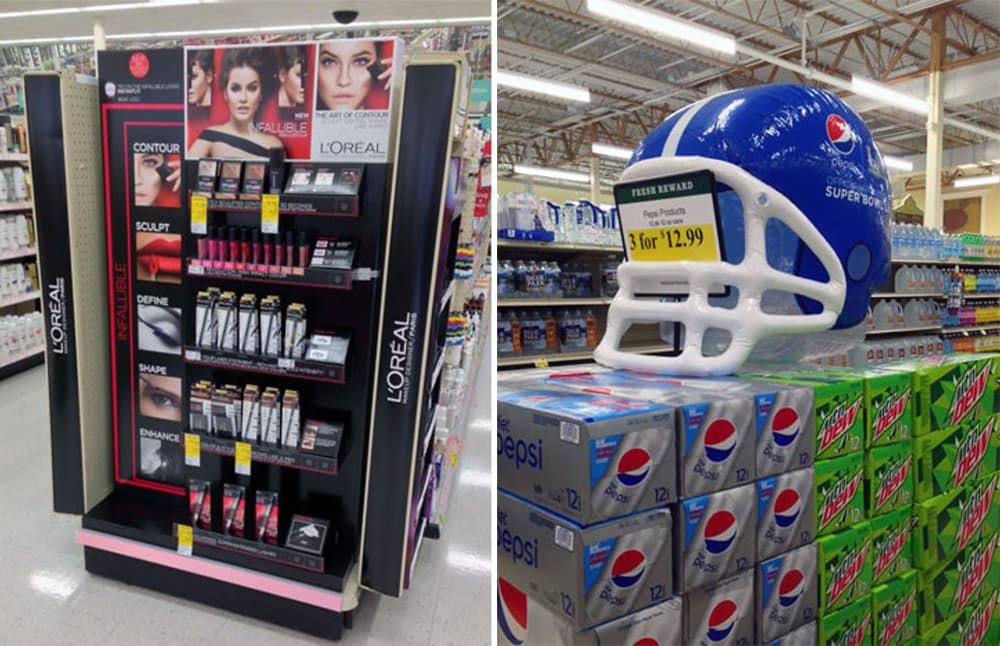
The Primary Goals of POP Displays
1. Attract Attention: High-contrast visuals, motion, or light cues
2. Convey Product Info: Simple, benefit-led copy
3. Encourage Impulse Buys: Immediate call-to-action
4. Build Brand Image: Consistent tone, color, and iconography
Example: An organic snack brand using a rustic wood display and “farm-to-shelf” messaging reinforces quality and authenticity.
Technology Shaping POP in 2025: Three Breakout Tracks
1. AI Emotion-Recognition Screens
Detect micro-expressions and adapt messages (e.g., stress triggers “anti-anxiety fidget toy” ads).
2. Cross-Screen Interactive Games
Fashion zones with AR fitting mirrors and ESLs—scan to get styling tips and unlock instant discounts.
3. IoT Price Tag Ecosystems
Datallen’s 4G ESL network supports:
Remote management in 80+ countries
Ultra-low power (5–7 years on one charge)
Custom graphics, QR codes, promo countdowns
POP is no longer a cardboard cutout—it’s the emotional translator between product and shopper. When shelves talk, price wars give way to value resonance.
Make Every Shelf Talk with Datallen
When your price tags speak, wallets listen. Datallen’s smart retail solutions—integrating ESLs and digital signage—transform every point of purchase into a high-performance sales engine. Explore how to build a self-evolving POP ecosystem where every touchpoint becomes a sales weapon.
For more insights, check out:
1. POP Materials vs. Smart POS Systems: Transforming Retail Marketing
2. Datallen | Essential Tools for Modern Retailers: The Synergy Between POS Systems and Electronic Pric
3. Enterprise ERP Management System: Costs, Types & Benefits
4. Top Retail Dynamic Pricing Strategy Examples and Best Practices
5. Datallen | Digital Signage Costs 2025: Buying & Installation Guide
6. How Much Will Electronic Shelf Labels Cost Your Business? What You Should Expect to Pay in 2025

